It looks like snow today, this Christmas Eve. The sun has not yet risen over our big valley, and as I look up to the distant head of our valley, there is a warm glow that fills the notches between the peaks. The rose of dawn is attempting to fill that high country. But that is to the east. Our weather almost always comes from the west and that view is what my office window faces. In that direction it is grim. A dark gray curtain is cast over all of our Hat Creek Ranges, and that could only mean snow.
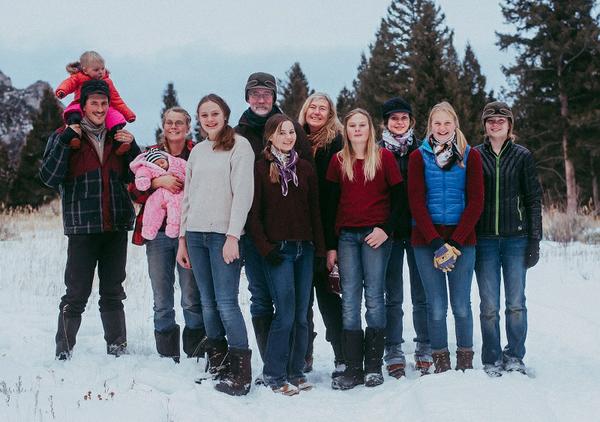
But snow means life for the next summer. It is money in the bank, as most of the moisture that falls in our country comes in the form of winter white. As the snow melts in spring the stored winter water will run into streams or soak into the ground. Mountain streams that are healthy will capture much of that moisture in the wetlands associated with them, and these wetlands will release that moisture slowly over the summer.
A similar gray was cast over the ranges several months ago, in August. It was smoke from the Rabbit Foot fire, and it meant death, at least in the short term. Anything in the Rabbit’s way was annihilated by firestorm.
But there was another pall of gray that hung over the range several months ago. It was a cloudy unsettledness in the minds of all of here on Alderspring that love that wild country. It started with a random visit with two gentleman from Montana.
The blue Ford pickup pulled up to the barn one early August day, and two men stepped out, both wearing cowboy hats, pointy boots, and jeans. “Glenn, my name’s Frank, and this here is Charlie.” Both reached out to shake hands. “I was hoping you had a few minutes to show us around. We’ve heard about your outfit, and would kinda like to see how you run it, and it would be great if you’d be willing to take us up on your summer grass piece, up Hat Creek.”
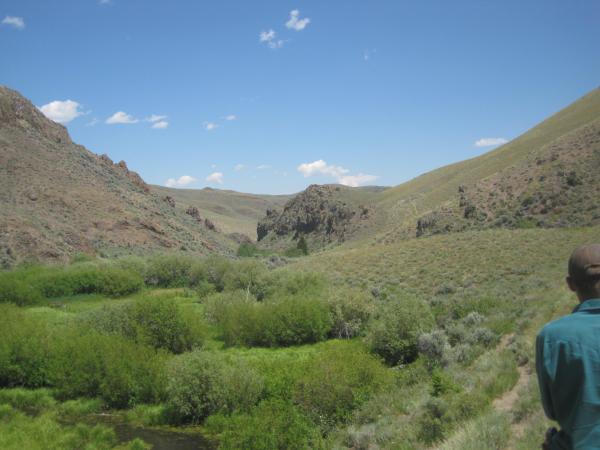
As we did quick introductions and shook hands, I did a quick scan of their getups, and decided that they were legit. They were cowmen. It’s often minutely subtle things that tell the tale of real ranchers; a composite view of the clasp of their handshake, the roughness of their hands, the wear spots on their denim and the track of sweat on their hats to name a few. These guys had certainly been outside, and horseback, like us.
This sort of visit happened occasionally, where folks wanted to see how we raise beef. But these guys seemed to be interested from more than an operational standpoint. My gut feeling was soon validated.
“I’d like to think about buying your outfit,” said Frank. “I’m hoping it’s for sale.”
I was a little dumbfounded. I looked Frank in the eye, and then Charlie. There was a faint smile on their faces, but it wasn’t in humor. It was them being amiable and serious. I found my tongue. “Well, it is certainly not listed or anything.” I paused, thinking things over. “Did you guys know Chuck Shiner in the next valley, in the Lemhi?”
“Sure did,” said Charlie.
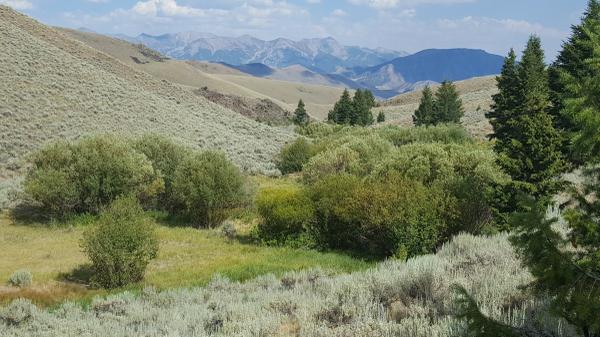
“Well, one day I was over on their place and they had a nice horse colt out in the pasture out by their barn. So I stopped by, and asked Chuck if he was for sale. And so Chuck says to me: “Glenn, when you ranch, everything is for sale.” Then he winked at me. “For the right money, that is.” I looked at the two men.
They nodded, understanding.
“So, I guess it would be for sale. For the right money, that is.” I knew they knew what kind of money it would have to me. It was common knowledge what ranches went for in our country. It was the irony of culture in Western agriculture, that was for sure. All through our mountain and prairie big sky country there were people living, ranching below the poverty level in old, falling down houses and outbuildings, living on great grandad’s ranch.
And here was the irony: they were land rich; many of them were worth millions. But taking the money was unthinkable, because it was never enough. They didn’t want to move to town; ranching was all they knew, and they had been on the land for generations. Sure, they would have a pile of money, but it wouldn’t be enough to both get out of debt and buy another ranch.
We stood silently kicking the dirt for a few seconds. It was hot, and I forced my mind to think through the possibilities. A dust devil silently stirred up a little column out on the sagebrush expanse that drew up behind the men. There were beads of sweat on Frank’s face, despite the straw cowboy hat that shaded him.
Now, there were beads of sweat on mine. But I always try to leave myself open to unexpected opportunities.
“I guess it wouldn’t hurt to take a drive,” I said. And so we did.
Our drive took longer than I originally planned. We covered some country, climbing in my four wheel drive up nearly 3000 feet into the high timber above the river breaks. My truck overheated, and we opened the windows to hot dusty air when I turned off the A/C. It ended up being for three hours, all of which was on our grazing country, and we hadn’t even begun to see much of the southern tier of the range where my cowhand crew was spiked out on the side of Table Mountain with 300 cattle. But I had to get back, to work, and life.
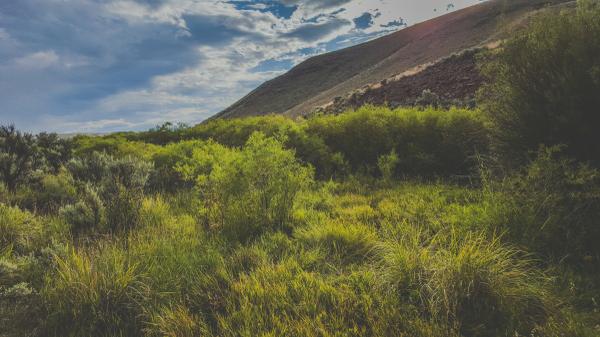
As I negotiated the curves along the Salmon River on highway 93 to get back to headquarters, Frank interrupted our conversation that had been ranging from folks we both knew in Montana to the history of the country. “How much earnest money would a guy need to tie this deal up for a week or so? It’s gonna take me at least that to put some money together.”
He was serious, and I was a little flabbergasted. For three hours, there was not one mention of money or buying or selling, and now this. But by the end of that week, Frank made me a verbal offer for just the Hat Creek Range, and our second ranch, Little Hat, in the middle of it.
It was a fair offer. And he gave us several weeks to think about it.
We didn’t have a lot of time to consider things at that time of year. The Rabbit Foot fire blew up right after Frank and Charlie’s visit, and our hands were full moving cattle and crew away from the inferno.
Caryl and I were both so very unsettled with the idea of selling. Sure, there was the palpable relief of pulling much of the burden of debt off of our shoulders. We’d been in debt for nearly 25 years, and we felt that we had deep grooves worn, rubbed raw, into our being from always having concern about making those payments. Foreclosure is always a real possibility in any type of agriculture- land is expensive and margins are thin- and there were always those stories of other ranchers simply disappearing, leaving keys on the kitchen table, bills unpaid, hoping to start a new life outside of ag.
We’ve penny-pinched our way through that next payment more times than I like to think about. And I know the debt load and financially tight years were tough on both of us.
But there was this nagging thing inside of our being that we couldn’t quite finger as we considered Frank’s offer. We could probably find another wild range to run cattle on, and we could continue our vision of supplying wild wellness and flavor to our friends and partners even while regenerating a new wild landscape. In some ways that was an exciting consideration.
But there was something else. And it had to do with something deep within us both. I always knew it was there, but I never put words or even thoughts to it, let alone on paper. It took Frank’s offer to bring it to the surface with the help of one of God’s own animals.
It was a beaver.
He had been dutifully working for two years in the upper reaches of Little Hat Creek. In the middle of one August day, I was alone, scouting for where to put our next cow camp. I spied some fresh beaver chews on a young aspen glade as my mare and I trotted through. The inner bark of aspen happens to be the mainstay of beaver (yes, they eat wood). I slipped off my mare, ground tying her above where I supposed he would be.
After I spied a small dam in the creek, I dropped to my hands and knees, stalking, crawling through the brush, silently. Finally, I saw the telltale wake in the water of a pond made by my quarry. He or she (hard to tell without beaver in hand, so to speak, as if that is a thing) was carrying, by mouth, one small willow or aspen branch at a time clipped from the perimeter of pond, little by little raising the height of his several dams. He was a small fellow, but I knew he worked patiently, calmly, purposefully from daylight to dusk, stopping every now and again to eat some tender bark from his building materials. I sat and watched him for over an hour.
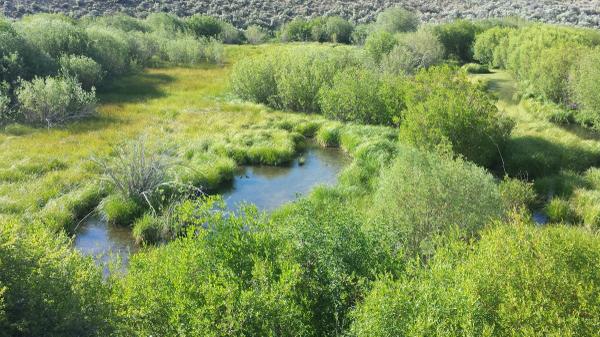
It was the first flat tailed rodent I’d seen in 14 years of riding in Hat Creek. The beavers had returned after being extirpated for decades.
There were remnants of their work throughout the range, hundreds of failing and abandoned dams, most of them long ago breached by spring snowmelt flows. Dams need constant beaver maintenance to stay effective, and without the beavers the dams were disappearing. As the dams were breached and the ponds drained, the wetland vegetation that grew around them died, and only a narrow corridor of riparian plants remained along the stream edge.
Where there are active beaver dams, the ponds slow water as it moves downhill, trap sediment, store water, and widen the available wet habitat for riparian plants. These plants- willows and aspen, thick green grasses and sedges- bring other species that thrived there like moose, mink and fishers. There would be hundreds of avian species that would build nests in the extended wetland shrubs and trees.
Beavers are a boon to habitat. And where they can remain undisturbed by trapping or habitat impact, beavers will mate for life and live up to 30 years. In a balanced stream system, beaver will move up and downstream, following new colonizing willows and aspen. As the woodies are eaten, the beavers move to another part of the stream and build new dams in a landscape level dance of water, plants, and beavers.
But cows can be their demise. Unmanaged cattle browse the beaver’s feedstuffs. First, cows eat the grasses and sedges; they, too, are a part of a beaver’s diet. Then, when the grasses and sedges are gone, cattle will turn to tender willow, aspen and birch shoots. Bovines become browsers when the grasses are gone. Cattle also cause physical impact to woody plants by rubbing and moving through the brush and will sometimes directly damage the intricate systems of dams and lodges that beavers need for security from predators. In addition, these infrastructures provide the agrarian means that beavers need to survive in perpetuity; raising the water table increases by irrigation the amount of woody feedstuffs that can grow there.
Now, years of careful control of Alderspring cattle has paid off and beavers are returning in several areas of Hat Creek. No one knows for sure how they know where secure and abundant food habitat exists. Some beaver experts theorize that older patriarch beavers leave currently occupied habitat, traveling even for months and years, exploring other possible habitat areas, eventually returning to their home range to lead their descendants to new habitat. While how they got there remains a mystery, it is clear the beavers have rediscovered and begun recolonizing the 50 miles of creek on the Hat Creek Ranges.
We are delighted to have them for the habitat improvements they bring, and I think, they are delighted to have us. For the first few years we managed the 70 square miles of the Little Hat range, we rode creeks 3 to 4 days a week, moving cattle out of the riparian bottoms and up onto the hillsides. But we weren’t getting the results we wanted. For the past 6 years, our cattle have not grazed wet areas of any kind because we are herding our cattle with our shepherding protocol we have dubbed “inherding.” We keep every animal on the range in a controlled herd 24/7 with our crew on horseback, selecting the best grasses for them to graze on the uplands. We stay completely out of lowland riparian, or wet areas, to let them recover from what has been nearly 150 years of cattle grazing.
As a result, a plethora of plant species are regenerating, as are birds, fish, and now, beavers. It’s exciting to experience firsthand the power of nature’s regenerating forces. It is a power that is in full swing in Hat Creek.
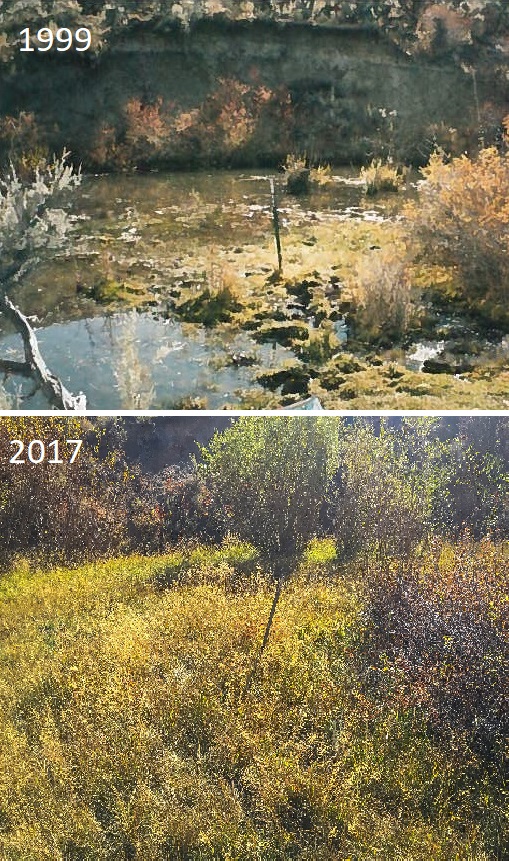
But no-one else we know who grazes on the vast wilderness of public lands in the West practices anything like inherding. Cattle still use riparian areas to various degrees, and in many operations, the cows are left to their own devices, extirpating species like aspen, willows and beavers.
And that is where we come back to our friend Frank, who placed an offer on the grazing on those 70 square miles of Hat Creek.
You see, Caryl and I share a vision, a belief that the Maker of these wild landscapes has placed the stewardship of that 70 square miles of wilderness on our hearts and minds. It runs deep in our soul, this love for the land and all the inhabitants that live on it. It is unthinkable to simply hand the reins of it to someone who is going to run it like nearly every other cattleman in the West. In just a few short years, the beavers may again be gone, and likely with them, many other species.
Now, dear reader, perhaps you don’t share my view of a Maker. And that is just fine. But it doesn’t really make things any different; I think most of you share our love for the land and wild things. And you would still feel violated when someone would not care for all the pieces and parts of the intricate patchwork of life that lives on these landscapes. Because there is a combined effect our stewardship, our actions on the land, along with others, have for future generations on this planet Earth.
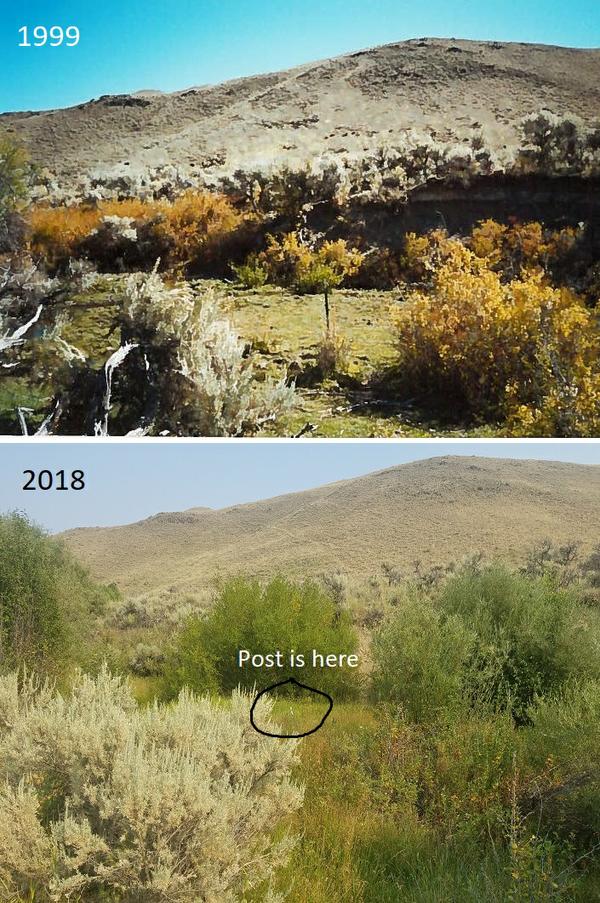
Then, perhaps there are those of you that do believe in God, a Maker and Creator. And you, our other dear reader, may be confused why we should care simply for a piece of land, instead of pouring all resources we have into humanity, and human suffering. Indeed there is so much. After all, there are wars, refugees, earthquakes, and tsunamis. And people are hurting and dying; we have a great love for those people as well. Aren’t our fellow humans our first calling? It can get confusing. Why should we pour our time and resources into the stewardship and care of nature in such a globally insignificant place as 70 square miles of Hat Creek?
This is how I see it: if God is great enough to engineer the nature of Hat Creek, this world, and an expanding universe measured in millions of light years, he certainly is not cash poor. He’s not short on resources. God really doesn’t need my money, or my time. He can do whatever he wants. But he uses us where he wants to, and I believe for now, he has put a piece of his handiwork called Hat Creek on my docket.
So I’m going to go ahead and care for that passion, and care for those flat-tailed overgrown funny looking rodents the Maker has put on my heart. And even though it may be to my eventual financial demise, I called Frank, and left him a voicemail to the effect that we would not have a deal. I couldn’t take his money.
Because of a beaver.
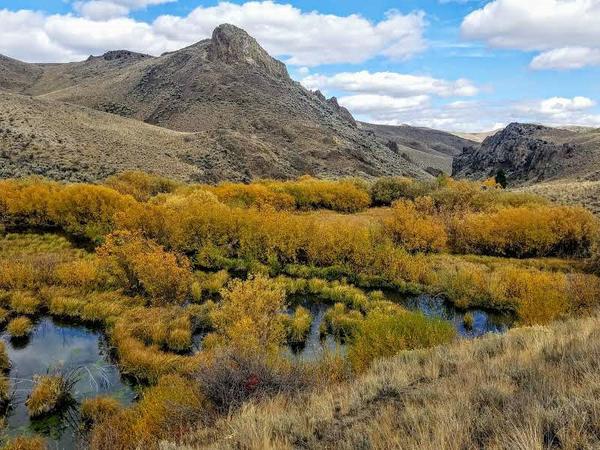
Now, I know that the beavers will never know of our failed transaction. They will never thank us. But we will be always look for them as we ride horseback by them. They are part of the patchworked and intricate fabric of that which we care for.
And I do know this: Caryl and I slept well that night I gave Frank my answer.
And that, my friends and partners, is why we do what we do. And it goes one step further: you and your wellness are certainly in that vision of stewardship. Here it is, that Alderspring vision in case you forgot: Handcrafting unparalleled flavor and wellness while regenerating wild landscapes.
And we will continue to uphold that vision, in partnership with all of you as long as we can. Thanks for joining us.
I wish you all a Merry Christmas and a happy, healthy, and prosperous New Year.
Glenn, Caryl, Girls and Cowhands on Alderspring

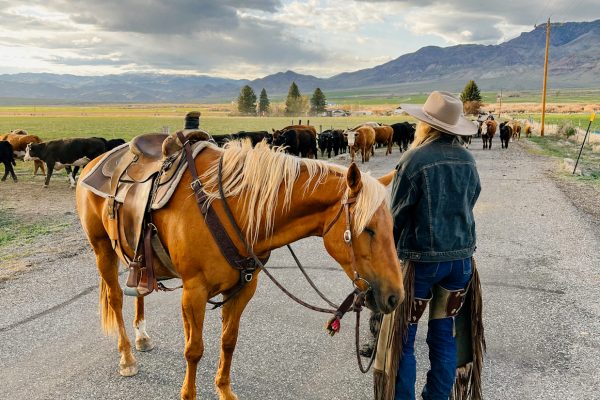



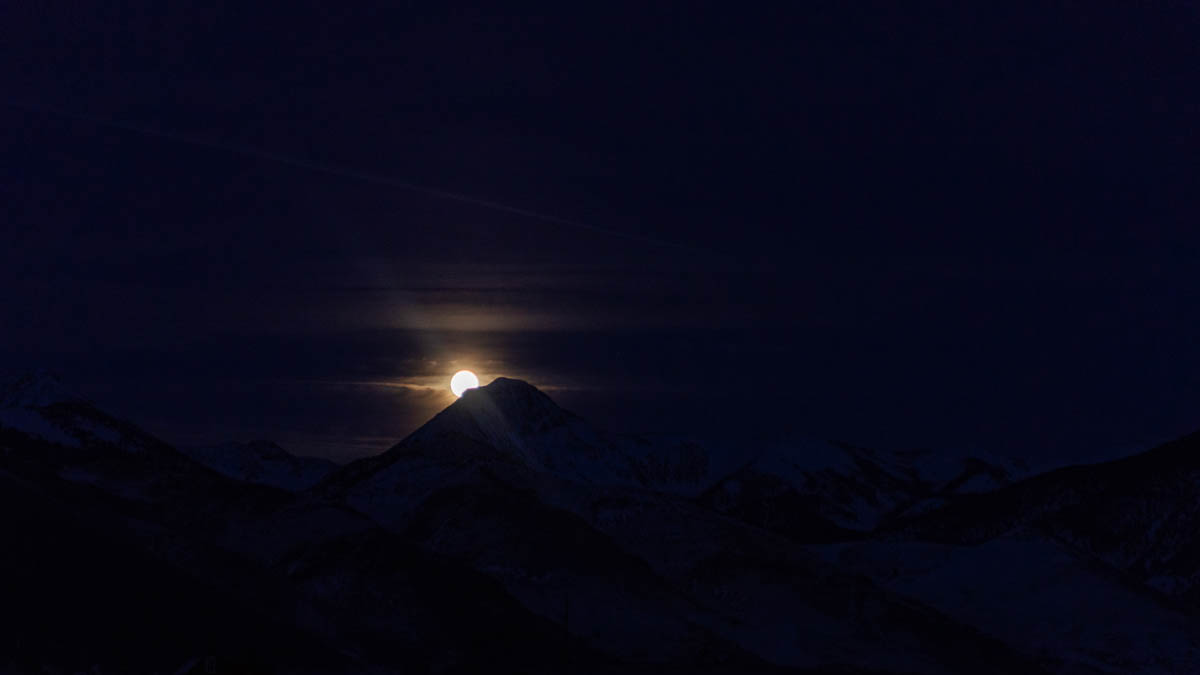

Leo G Younger
Thanks to all the Alderspring people and other life you sustain. Overcome with emotion, I had to stop reading awhile, thankful you are providing as too few others are, yet, if ever.
Marilyn Morita
Thank you for your wonderful stories– they are such a source of personal inspiration. I hope the land and your ranch stay in the ownership of your family forever. You have truly been blessed by GOD and a blessing to others.
MERRY CHRISTMAS TO YOU AND YOUR FAMILY!
HAPPY NEW YEAR!
Mr.& Mrs. Morita
P.S. We look forward to ordering more of your delicious beef! ☺😊
Glenn Elzinga
Thank you Marilyn! I’m sorry this is such a late response! Hope you are having a wonderful start to 2023.
Leo Younger
Thanks for telling this story, again. Seeing what you saw in the eye of the mind, I’m thankful to be a participant. Thank you all for continuing your inherding and transhumance which seems to be unique in America.
Shirley
Tough decision but money isn’t as meaningful when it means that all you’ve worked for all these years has been nullified. You made the right decision, however difficult and soul searching. God and all the Alderspring employees and customers thank you from the bottom of our heartsâ£ï¸